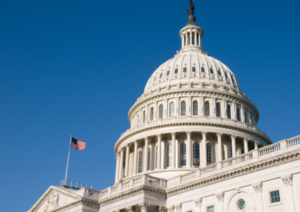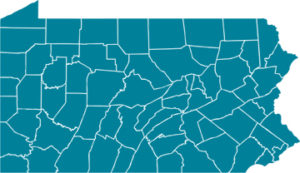Medicaid DSH Cut Delayed
Scheduled cuts in Medicaid DSH payments to hospitals will be delayed until at least late May under new federal spending legislation.
The cuts in Medicaid disproportionate share allotments to the states, mandated by the Affordable Care Act and delayed several times by Congress – including twice in FY 2020 alone under continuing resolutions to fund the federal government – are among a number of so-called “extenders” included in spending bills passed by Congress this week and sent to the president for his signature.
 Authorization for delaying the cut in allotments to the states, which would have resulted in reduced Medicaid DSH payments for many hospitals – including private safety-net hospitals – would expire on May 22. Congress is expected to address Medicaid DSH, along with surprise medical bills, the price of prescription drugs, and other health care matters, before that time.
Authorization for delaying the cut in allotments to the states, which would have resulted in reduced Medicaid DSH payments for many hospitals – including private safety-net hospitals – would expire on May 22. Congress is expected to address Medicaid DSH, along with surprise medical bills, the price of prescription drugs, and other health care matters, before that time.
SNAP has argued against Medicaid DSH cuts for a number of years, doing so most recently in an October 2019 message to members of Pennsylvania’s congressional delegation in which it wrote that
Should the Medicaid DSH cut take effect, Pennsylvania would lose 40 percent of its federal Medicaid DSH allotment in FY 2020 and 80 percent of its allotment each year from FY 2021 to FY 2025. Such devastating cuts could jeopardize access to care for the state’s uninsured and jeopardize the ability of the state’s safety-net hospitals to serve them. It is essential, for the sake of Pennsylvania’s health care safety net and the communities and patients that safety net serves, that the Medicaid DSH cut continue to be delayed.
Learn more about the delay in Medicaid DSH cuts and other aspects of this recent health care spending legislation in the Becker’s Hospital Review article “Congress unveils $1.3T spending deal: 5 healthcare takeaways.”
 The Medicaid and CHIP Payment and Access Commission kicked off its December meeting with highlights from its forthcoming issue of MACStats: Medicaid and CHIP Data Book, due out December 18, 2019. MACStats brings together statistics on Medicaid and State Children’s Health Insurance Program (CHIP) enrollment and spending, federal matching rates, eligibility levels, and access to care measures, which come from multiple sources.
The Medicaid and CHIP Payment and Access Commission kicked off its December meeting with highlights from its forthcoming issue of MACStats: Medicaid and CHIP Data Book, due out December 18, 2019. MACStats brings together statistics on Medicaid and State Children’s Health Insurance Program (CHIP) enrollment and spending, federal matching rates, eligibility levels, and access to care measures, which come from multiple sources. The Prescription Drug Pricing Reduction Act includes a provision that would eliminate two years of Affordable Care Act-mandated cuts in the allocation of federal money to the states for Medicaid disproportionate share hospital payments (Medicaid DSH). Those cuts have been delayed several times by Congress but were scheduled to begin in October of 2019 and run through federal FY 2025, only to be delayed again twice by continuing resolutions adopted by Congress to fund the federal government in the absence of enacted appropriations bills.
The Prescription Drug Pricing Reduction Act includes a provision that would eliminate two years of Affordable Care Act-mandated cuts in the allocation of federal money to the states for Medicaid disproportionate share hospital payments (Medicaid DSH). Those cuts have been delayed several times by Congress but were scheduled to begin in October of 2019 and run through federal FY 2025, only to be delayed again twice by continuing resolutions adopted by Congress to fund the federal government in the absence of enacted appropriations bills. Senate Bill 314, passed by the legislature and signed by Governor Wolf, establishes a new Rural Health Redesign Center Authority and Pennsylvania Rural Health Redesign Center fund that will seek to support the delivery of health care by rural hospitals in the state by, as a legislative co-sponsorship memo explained,
Senate Bill 314, passed by the legislature and signed by Governor Wolf, establishes a new Rural Health Redesign Center Authority and Pennsylvania Rural Health Redesign Center fund that will seek to support the delivery of health care by rural hospitals in the state by, as a legislative co-sponsorship memo explained, The shift away from using the federal exchange and developing a state-based exchange was approved by the state legislature earlier this year. That shift took a major step forward recently when the state hired a contractor to create the site’s platform.
The shift away from using the federal exchange and developing a state-based exchange was approved by the state legislature earlier this year. That shift took a major step forward recently when the state hired a contractor to create the site’s platform. According to the bond rating agency, non-profit hospitals are seeing growing amounts of bad debt as they struggle, often unsuccessfully, to collect from patients whose high deductibles leave them on the hook for meaningful amounts of care.
According to the bond rating agency, non-profit hospitals are seeing growing amounts of bad debt as they struggle, often unsuccessfully, to collect from patients whose high deductibles leave them on the hook for meaningful amounts of care. The statement, an annual OMB document, organizes the priorities as follows:
The statement, an annual OMB document, organizes the priorities as follows: According to the Centers for Medicare & Medicaid Services, the Medicaid improper payment rate in FY 2019 was 14.9 percent, amounting to $57.36 billion in improper payments. The improper payment rate that year for CHIP services was 15.83 percent, representing $2.74 billion in improper payments. Both are significant increases over FY 2018, when the Medicaid improper payment rate was 9.7 percent, representing $36.25 billion, and the CHIP rate was 8.57 percent, for $1.39 billion.
According to the Centers for Medicare & Medicaid Services, the Medicaid improper payment rate in FY 2019 was 14.9 percent, amounting to $57.36 billion in improper payments. The improper payment rate that year for CHIP services was 15.83 percent, representing $2.74 billion in improper payments. Both are significant increases over FY 2018, when the Medicaid improper payment rate was 9.7 percent, representing $36.25 billion, and the CHIP rate was 8.57 percent, for $1.39 billion. While DHS’s area of endeavor is broad and goes beyond health care, Medicaid is an important aspect of its work and that importance is reflected in the plan, which includes descriptions of DHS’s ambitions in the following areas:
While DHS’s area of endeavor is broad and goes beyond health care, Medicaid is an important aspect of its work and that importance is reflected in the plan, which includes descriptions of DHS’s ambitions in the following areas: